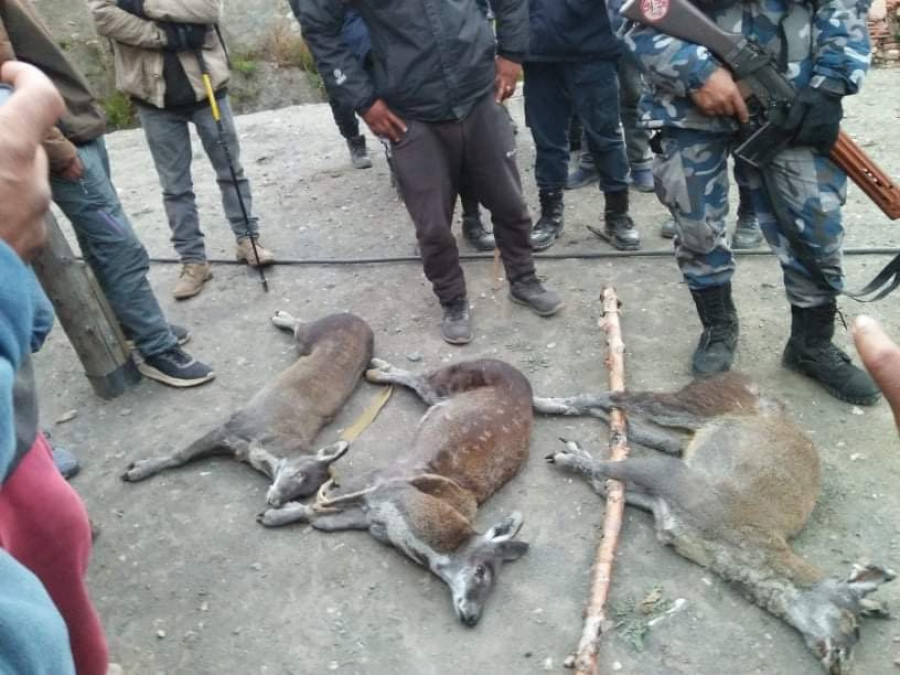Editorial
Poaching amid pandemic
Locals must be taught that the destruction of wildlife will adversely affect their way of life too.
It has been a constant battle between poachers and park rangers when it comes to protecting endangered wildlife. Reported incidents have seen a spike since the beginning of the nationwide lockdown induced by Covid-19 in March 2020. But the reports in the pre-pandemic era weren’t all that pessimistic. Nepal was considered a success story when it came to protecting rhinos. So much so that Nepal had achieved five years of zero poaching of rhinos between 2011 and 2018. And the zero poaching framework had indeed set an example for numerous countries both in Asia and Africa.
This was only made possible through a concerted effort between those at the highest levels in government and local communities. But the national lockdown seems to have emboldened poachers to set traps and kill endangered species. In the last few weeks alone, there has been increasing poaching and smuggling of musk deer, locally known as kasturi mriga, in the Annapurna Conservation Area Project (ACAP) in Mustang district. As many as five musk deer were found dead in snares, and patrols recovered as many as 171 snares planted to trap local wildlife.
Recent activities raise some critical questions: Why is there a sudden rise in poaching activities? How was it possible to achieve zero poaching for almost seven years and suddenly see a deterioration to a level leaving a trail of death and destruction of wildlife? Have the authorities in charge of protecting wildlife suddenly lost their bearings? Or is there something more sinister going on between poachers and the local community? How do those assigned the task of preserving wildlife explain the discovery of traps in such large numbers? Coming across 171 snares seems to be gross negligence on the part of the authorities.
It is pretty common for farmers in Nepal to set traps to protect their crops against damage by wildlife, but there is no provision to kill the trapped animal. Despite legal provisions concerning the prevention and protection of wildlife, locals are almost unaware of the consequences that may befall them. It is often the carrot and stick policy adopted by the authorities that has stemmed any increase in such incidences, but tackling the menace of poachers is an entirely different ball game. It requires the participation of local communities at the grassroots level to ward off the perils brought about by poachers.
Enforcement is a necessary tool that can act as a deterrent. But there is no guarantee that enforcing stricter regulations alone will aid in preventing the killing of wildlife. Local communities need to be made to realise how an imbalance in the local ecology caused by the destruction of wildlife will, in turn, adversely affect their way of life. With climate change acquiring centre stage at world forums, the direct correlation between poaching and its effect on biodiversity should serve as a poignant reminder of how circumstances could be unforgiving if we continue pillaging the environment to serve our purpose callously.




 14.12°C Kathmandu
14.12°C Kathmandu














